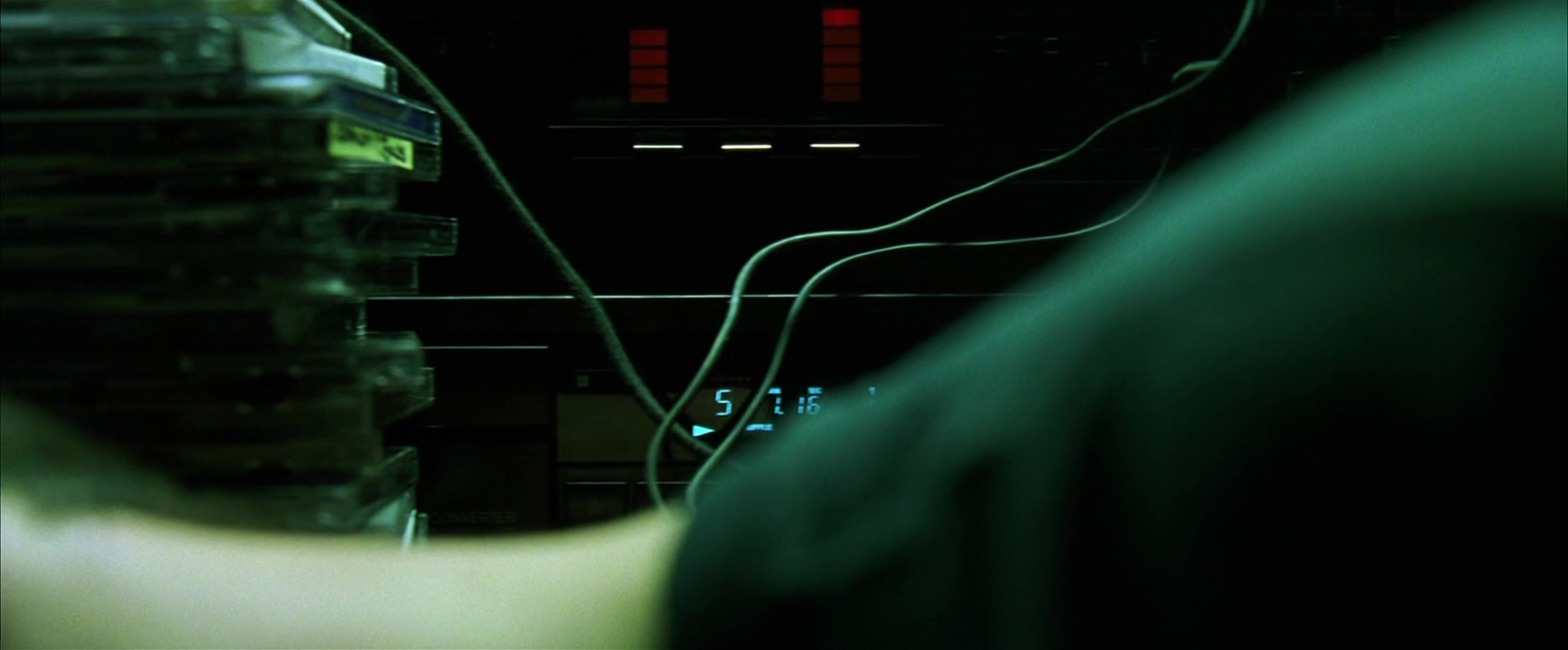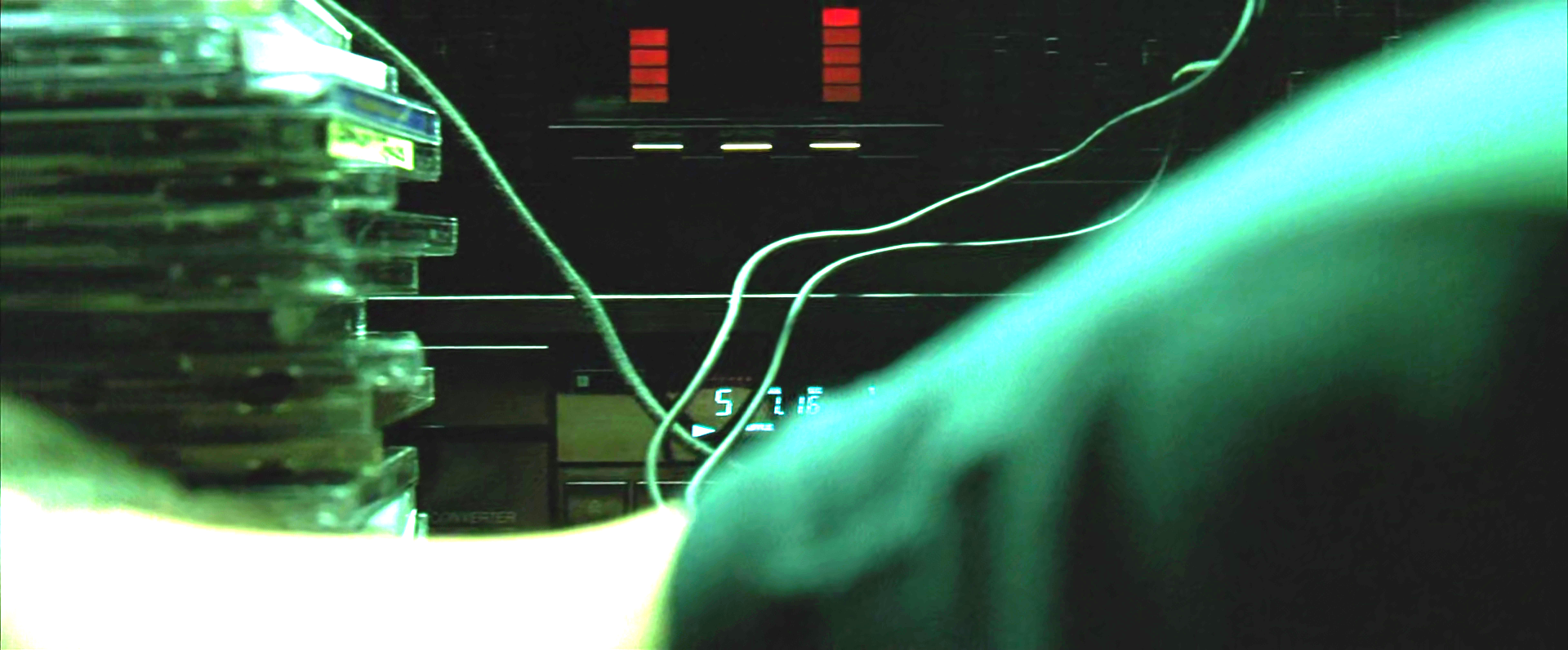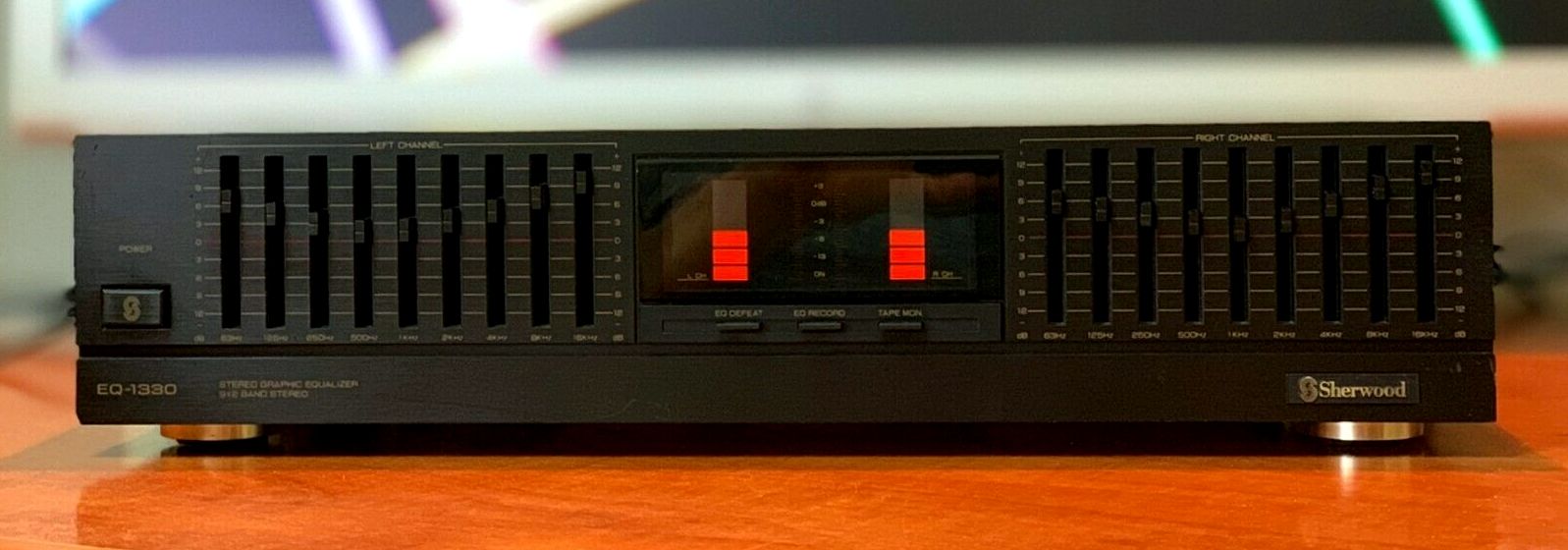The Perfect 2000s Hacker HiFi - Sat, Feb 4, 2023
I was watching one of my favourite trans movies one night whilst staring at a terminal, The Matrix. (I enjoyed the sequels too, and the 2022 movie). I'm really into ✨aesthetics✨ and one of my favourite aesthetics is that of 00s hacker culture & consumer electronics & computer gear of the era (feels weird to call it an era, but sure I guess). So, enjoying the aesthetic of Neo's apartment in the "follow the white rabbit" scene, I was struck suddenly with a bolt of pure curiosity (well, probably special interest, but this is more dramatic), noticing the HiFi gear on Neo's desk.
I decided instantly I needed to spend months sleuthing to work out what I could about the visible gear, and recreating the setup with the help of eBay and determination.
Why would you even want a CD/MD/HiFi anything player, just use Spotify?
Look, it's really cool OK and it makes me happy just be happy for me.
There's a really long rant about how streaming services are destroying music and limiting the rights of people who want to enjoy music through the pervasive use of DRM. I reckon if you're reading this post though, you've probably already thought about it and made peace with this stuff, or feel exactly the way I do and I won't be telling you anything interesting or new.
Plus, I really hate cool stuff ending up in the trash for no reason. If I can give something a new chance at being used for another 10-20 years, that's great. My audio needs are really well served by this stuff.
Finding the gear
I started by firing up VLC and tacking a couple of screencaps from the slow pan behind Neo's head, whilst he's asleep at the desk.
"I know why you're here, Neo. I know what you've been doing… why you hardly sleep, why you live alone, and why night after night, you sit by your computer. You're looking for him some old HiFi gear."
vlcsnap

In the screencap, we can see two of the three units. The three units are, top to bottom -
- An unknown amplifier, the top is removed, it's silver, but I never did see it well enough to work out what it was. I also hate silver electronics, so that suits me JUST FINE.
- A graphic EQ with orange VU meters. They look red, but the saturation is really high in the image, due to the ✨aesthetic✨ of the scene.
- A physical media player of some sort. It's most likely a CD player given the stack of CDs next to it.
For the Graphical EQ, I assumed it's an EQ rather than just a VU meter because EQs were way more common in HiFi systems of the time than dedicated digital VU meters. For the CD player, we can pretty clearly see the layout of the display of the unit, a track list, a play symbol, and the location of the CD tray if you look really closely. So, I was confident this was a CD player.
A small piece of trivia: the track playing on the HiFi system is Dissolved Girl, by Massive Attack, (which was not on the OST for some reason?). This song was track 6 on the Album Mezzanine, but you see track 5 on the display of CD the player. Illuminati confirmed.
Another useful bit of information is that this scene (like most scenes in The Matrix) is presumed to have been filmed in Sydney, Australia. That means we can narrow our search to equipment which was released in Australia, and runs on 230/240v. It would have been a much more painful process to import gear from the US or elsewhere and run everything on voltage converters, rather than just sourcing gear locally.
enhance **
A helpful technique for this kind of thing is to amp the contrast and brightness on an image to try and find distinctive features. In this case, I was able to reveal some text that wasn't visible before by bumping the brightness to 107% and the contrast to 97%.

Font usage was fairly consistent for individual equipment manufacturers, and this one, if you look at it, and compare to other CD players at the time, screams "It's a Sony". We can also see the word "CONVERTER" underneath the CD tray. After a bunch of really time consuming research looking at photos of Sony CD players from the time, there were several models with a "HIGH DENSITY LINEAR CONVERTER", so this seemed like a helpful find. Looking over photos on the internet, the CDP-209ES looked similar, but the location of the buttons and tray were not right. I then found the CDP-491, and thought my search was over, until I realised this was only released in the US. I found the service manual, and noticed the "EU/AUS" version was called the CDP-295.

I felt extremely confident I'd found the model used in the scene, and very accomplished. I set up my eBay and Gumtree (think, Craigslist, TradeME or similar for those outside of Australia) searches, and kept digging around for details on the Graphic EQ.
I was about 3 months of browsing and searching in at this point. For the EQ, the image manipulation revealed that the VU meter has 3 buttons underneath, each with a label, and that the top segment of the VU is brighter than the lower ones. I also confirmed that it was definitely an EQ, because you can also see the individual band level sliders. Thankfully, there were far fewer standalone EQ manufacturers than there were CD player manufacturers at the time. I started searching and initially suspected I would find it was a Yamaha, but ended up finding a really similar looking unit by Sherwood, the EQ-1350. The style of the sliders was the same, the VU meter was not. I narrowed my search briefly to Sherwood, and found the EQ-1330.

For my searches, I mostly used Radio Museum and by "searching" I mean clicking through the model listing one by one and looking a the images and manuals. This is what a hyperfocus mixed with a special interest looks like, folks.
Setting up & using the gear
After many more months of searching, I finally found a CDP-295 for sale, and purchased it. It arrived without any issues. At around the same time (the same week, actually!?) I found an EQ-1330 for sale on Gumtree. I organised postage with the Gumtree seller, and thankfully the sale and postage were a success and I had an EQ-1330 in my hands.
Finding an amp
For most graphic EQs, they need an audio path that will feed them pre-amplifier audio path for whatever is being fed into the amplifier out of the unit, and then a path to feed the modified/equalised audio back into the audio path inside the amplifier. This is normally via a pre-out/pre-in pair on a fancy amplifier, but more commonly, it's via a tape rec/play loop. Lots of amplifiers in the 80s, 90s and 00s had tape rec and tape play inputs and outputs for feeding the audio path through a tape player, for recording purposes. On amplifiers that don't have dedicated pre-in/pre-out paths, this works just as well. The Sherwood EQ-1330 also accomodates this really well by having it's own tape play/rec loop on the EQ, so you can hook a tape player (or other recording device up) into the audio path via the EQ as well, so you can use up the tape rec/play loop audio connectors on your amplifier, without sacrificing the ability to record the audio path. You can even record the equalised audio path this way, too, controllable by the "EQ Record" button on the front of the EQ unit.
So now I had an EQ, a CD player, and a whole lot of hacker aesthetic with nothing to plug it into. I needed an amplifier/receiver to plug it into, and I needed to find a stereo one with similar styling and a tape rec/play loop as a minimum, with enough inputs to accomodate at least the CD player and one other input.
I did a bunch of research, which mostly consisted of browsing eBay again, looking for "vintage" or "retro" stereo amplifiers, and then checking the photos of the back of the units. I found and settled on a Yamaha AX-330e, which is very basic and low power. I exclusively listen to music using headphones, not as an audiophile thing, more from a sensory overload perspective, so the low power wasn't an issue for me, I mostly won't use the amplifier part of the receiver at all.
I plugged in the amp, ran the EQ via the tape rec/play loop, and played a CD. This is what the system looks like today, playing Mezzanine by Massive Attack.

PC audio
I have plenty of spare inputs, so I run the line out of my Behringer UMC404HD audio interface into the "VCR/AUX" input of the amplifier, meaning I can run it via the EQ as well. It sounds great, and means I can switch between listening to a CD or PC audio with a simple switch on the amplifier, without replugging my headphones.
Summary & future plans
I'm very pleased with the results of all of the research, and endless searching, and the system works really well. It's also very user serviceable, I've already replaced the drive belt in the CDP-295 to correct a CD loading issue, the process was very simple.
In the future, I plan to add a MiniDisc deck, as I still have a tape rec/play loop on the EQ and an MD recorder is extremely on point for this aesthetic, and I'm absolutely obsessed with the general aesthetic and technology behind MiniDiscs, anyhow.
I've also got some Vinyl and a turntable I want to bring into the system, but need to work out a proper shelving setup as it only sits extremely precariously on top of the amplifier.
If you enjoy the aesthetic of this system and this era, let me know, I'd love to nerd out with you about it!